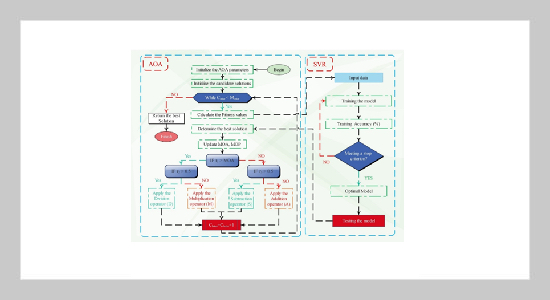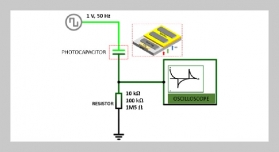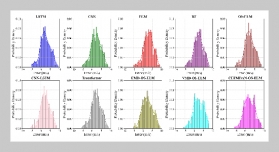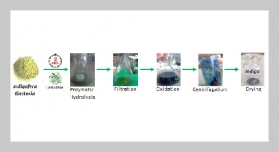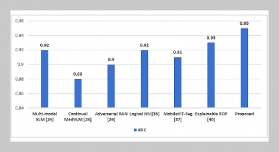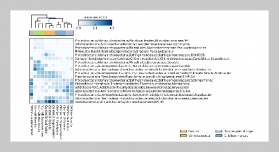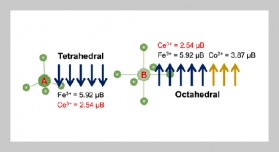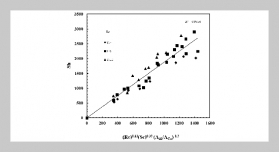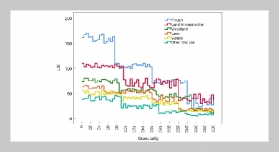- [1] R. Ince, (2012) “Determination of concrete fracture pa�rameters based on peak-load method with diagonal split�tension cubes" Engineering Fracture Mechanics 82: 100–114.
- [2] S. Dehghan, “Comparison of seismic behavior factors for reinforced concrete (RC) special moment resisting frames (SMRFs) in Iran in low-, mid-, and high-rise buildings based on Iranian seismic standard 2800 and ASCE":
- [3] Z. P. Bažant and E. Becq-Giraudon, (2002) “Statisti�cal prediction of fracture parameters of concrete and im�plications for choice of testing standard" Cement and concrete research 32: 529–556.
- [4] M. F. Kaplan. “Crack propagation and the fracture of concrete”. In: 58. 1961, 591–610.
- [5] C. E. Kesler, D. J. Naus, and J. L. Lott. “Fracture mechanics-its applicability to concrete”. In: 1972.
- [6] A. Hillerborg, M. Modéer, and P.-E. Petersson, (1976) “Analysis of crack formation and crack growth in concrete by means of fracture mechanics and finite elements" Ce�ment and concrete research 6: 773–781.
- [7] Y. Jenq and S. P. Shah, (1985) “Two parameter fracture model for concrete" Journal of engineering mechanics 111: 1227–1241.
- [8] G. V. Guinea, J. Planas, and M. Elices, (1992) “Mea�surement of the fracture energy using three-point bend tests: Part 1—Influence of experimental procedures" Ma�terials and Structures 25: 212–218.
- [9] N. Trivedi, R. K. Singh, and J. Chattopadhyay, (2015) “Investigation on fracture parameters of concrete through optical crack profile and size effect studies" Engineering Fracture Mechanics 147: 119–139.
- [10] J. Planas, M. Elices, and G. V. Guinea, (1992) “Mea�surement of the fracture energy using three-point bend tests: Part 2—Influence of bulk energy dissipation" Ma�terials and Structures 25: 305–312.
- [11] R. A. Einsfeld and M. S. L. Velasco, (2006) “Fracture parameters for high-performance concrete" Cement and Concrete Research 36: 576–583.
- [12] Y. Dawei, Z. Bing, G. Bingbing, G. Xibo, and B. Raz�zaghzadeh, (2023) “Predicting the CPT-based pile set-up parameters using HHO-RF and PSO-RF hybrid models" Structural Engineering and Mechanics 86: 673–686.
- [13] G. Moradi, E. Hassankhani, and A. M. Halabian, (2022) “Experimental and numerical analyses of buried box culverts in trenches using geofoam" Proceedings of the Institution of Civil Engineers-Geotechnical Engineering 175: 311–322.
- [14] B. Bayrami, (2022) “Estimation of splitting tensile strength of modified recycled aggregate concrete using hybrid algorithms" Available at SSRN 3992623:
- [15] R. S. Benemaran and M. Esmaeili-Falak, (2023) “Pre�dicting the Young’s modulus of frozen sand using ma�chine learning approaches: State-of-the-art review" Ge�omechanics and Engineering 34: 507–527.
- [16] M. K. Amiri, S. P. G. Zaferani, M. R. S. Emami, S. Zahmatkesh, R. Pourhanasa, S. S. Namaghi, J. J. Kle�meš, A. Bokhari, and M. Hajiaghaei-Keshteli, (2023) “Multi-objective optimization of thermophysical properties GO powders-DW/EG Nf by RSM, NSGA-II, ANN, MLP and ML" Energy: 128176.
- [17] M. Esmaeili-Falak and R. S. Benemaran, (2023) “En�semble deep learning-based models to predict the resilient modulus of modified base materials subjected to wet-dry cycles" Geomechanics and Engineering 32: 583–600.
- [18] A. R. Nasab and H. Elzarka, (2023) “Optimizing Ma�chine Learning Algorithms for Improving Prediction of Bridge Deck Deterioration: A Case Study of Ohio Bridges" Buildings 13: 1517.
- [19] R. S. Benemaran, M. Esmaeili-Falak, and A. Javadi, (2022) “Predicting resilient modulus of flexible pavement foundation using extreme gradient boosting based opti�mised models" International Journal of Pavement Engineering: 1–20.
- [20] X. Shi, X. Yu, and M. Esmaeili-Falak, (2023) “Improved arithmetic optimization algorithm and its application to carbon fiber reinforced polymer-steel bond strength esti�mation" Composite Structures 306: 116599.
- [21] R. S. Benemaran, (2023) “Application of extreme gra�dient boosting method for evaluating the properties of episodic failure of borehole breakout" Geoenergy Sci�ence and Engineering 226: 211837.
- [22] S. Roudini, L. C. Murdoch, M. Shojaei, and S. DeWolf, (2023) “Proxy-based Bayesian inversion of strain tensor data measured during well tests" Geomechanics for Energy and the Environment 36: 100506.
- [23] M. Esmaeili-Falak, H. Katebi, M. Vadiati, and J. Adamowski, (2019) “Predicting triaxial compressive strength and Young’s modulus of frozen sand using arti�ficial intelligence methods" Journal of Cold Regions Engineering 33: 04019007.
- [24] M. Khorshidi, A. Goli, M. Oreškovi´c, K. Khayam�bashi, and M. Ameri, (2023) “Performance evaluation of asphalt mixtures containing different proportions of alternative materials" Sustainability 15: 13314.
- [25] E. Tabasi, B. Jahangiri, and F. Kooban, (0) “Effect of temperature profile on dynamic behaviour of asphalt pave�ments under moving loads" Proceedings of the Insti�tution of Civil Engineers - Construction Materials 0(0): 1–16. DOI: 10.1680/jcoma.22.00116.
- [26] I. Afshoon, M. Miri, and S. R. Mousavi, (2021) “Com�bining Kriging meta models with U-function and K�Means clustering for prediction of fracture energy of con�crete" Journal of Building Engineering 35: 102050.
- [27] Z. Wang, (2023) “Integrated and optimized SVR analysis: Assessment of the preliminary and entire fracture energy of concrete" Journal of Intelligent & Fuzzy Systems: 1–18.
- [28] M. J. G. Rad, S. Ohadi, J. Jafari-Asl, A. Vatani, S. A. Ahmadabadi, and J. A. F. O. Correia. “GNDO�SVR: An efficient surrogate modeling approach for reliability-based design optimization of concrete dams”. In: 35. Elsevier, 2022, 722–733.
- [29] K. Khan, M. Iqbal, R. Biswas, M. N. Amin, S. Ali, J. Gudainiyan, A. A. Alabdullah, and A. M. A. Arab, (2022) “A Hybrid SVR-Based Prediction Model for the Interfacial Bond Strength of Externally Bonded FRP Lam�inates on Grooves with Concrete Prisms" Polymers 14: 3097.
- [30] H. U. Ahmed, R. R. Mostafa, A. Mohammed, P. Sihag, and A. Qadir, (2023) “Support vector regression (SVR) and grey wolf optimization (GWO) to predict the com�pressive strength of GGBFS-based geopolymer concrete" Neural Computing and Applications 35: 2909–2926.
- [31] C. Fan, Y. Zheng, S. Wang, and J. Ma, (2023) “Pre�diction of bond strength of reinforced concrete structures based on feature selection and GWO-SVR model" Con�struction and Building Materials 400: 132602.
- [32] M. S. Alam, N. Sultana, and S. M. Z. Hossain, (2021) “Bayesian optimization algorithm based support vector re�gression analysis for estimation of shear capacity of FRP reinforced concrete members" Applied Soft Computing 105: 107281.
- [33] M. R. Kaloop, B. Roy, K. Chaurasia, S.-M. Kim, H.-M. Jang, J.-W. Hu, and B. S. Abdelwahed, (2022) “Shear strength estimation of reinforced concrete deep beams us�ing a novel hybrid metaheuristic optimized SVR models" Sustainability 14: 5238.
- [34] Y. Peng and C. Unluer, (2023) “Modeling the mechanical properties of recycled aggregate concrete using hybrid ma�chine learning algorithms" Resources, Conservation and Recycling 190: 106812.
- [35] S. S. Zadeh, N. Joushideh, B. Bahrami, and S. Niya�fard, (2023) “A review on concrete recycling" World Journal of Advanced Research and Reviews 19: 784– 793.
- [36] C. E.-I. du Béton. CEB-FIP model code 1990: Design code. Thomas Telford Publishing, 1993.
- [37] C. F. Code, (2010) “model (2010) Fib model code for con�crete structures 2010" Doc Competence Cent Siegmar Kästl eK, Ger:
- [38] J. C. Committee, (2007) “Standard Specifications for Concrete Structures—2007" Japan Society of Civil Engineers: Tokyo, Japan:
- [39] M. Khorshidi, M. Ameri, and A. Goli, (2023) “Crack�ing performance evaluation and modelling of RAP mix�tures containing different recycled materials using deep neural network model" Road Materials and Pavement Design: 1–20.
- [40] M. H. Basiri, F. Javadnejad, and A. Saeidi. “Forecast�ing crude oil price with an artificial neural network model based on a regular pattern for selecting train�ing and testing sets using dynamic command-line functions”. In: 2015.
- [41] M. Malmir, H. Momeni, and A. Ramezani. “Con�trolling megawatt class WECS by ANFIS network trained with modified genetic algorithm”. In: IEEE, 2019, 939–943.
- [42] X. Wang, H. A. Saifullah, H. Nishikawa, and K. Nakarai, (2020) “Effect of water–cement ratio, aggregate type, and curing temperature on the fracture energy of concrete" Construction and Building Materials 259: 119646.
- [43] D. Darwin, S. Barham, R. Kozul, and S. Luan. “Frac�ture energy of high-strength concrete”. In: American Concrete Institute, 2001.
- [44] F. H. Wittmann, P. E. Roelfstra, H. Mihashi, Y.-Y. Huang, X.-H. Zhang, and N. Nomura, (1987) “In�fluence of age of loading, water-cement ratio and rate of loading on fracture energy of concrete" Materials and structures 20: 103–110.
- [45] T.-P. Chang and M.-M. Shieh, (1996) “Fracture prop�erties of lightweight concrete" Cement and concrete research 26: 181–188.
- [46] K. M. El-Sayed, G. V. Guinea, C. Rocco, J. Planas, and M. Elices. “Influence of aggregate shape on the fracture behaviour of concrete, Fracture Mechanics of Concrete Structures”. In: 1998.
- [47] R. Gettu, Z. P. Bazant, and M. E. Karr, (1990) “Fracture properties and brittleness of high-strength concrete." ACI Materials Journal 87: 608–618.
- [48] M. Hassanzadeh, (1998) “The influence of the type of coarse aggregates on the fracture mechanical properties of high-strength concrete" AEDIFICATIO Publishers, Fracture Mechanics of Concrete Structures, 1: 161–170.
- [49] H. K. Hilsdorf and W. Brameshuber. Size effects in the experimental determination of fracture mechanics parame�ters. 1985.
- [50] Y. S. Jenq and S. P. Shah, (1985) “A fracture toughness criterion for concrete" Engineering fracture mechanics 21: 1055–1069.
- [51] R. John and S. P. Shah. EFFECT OF HIGH STRENGTH AND RATE OF LOADING ON FRACTURE PARAM�ETERS OF CONCRETE. 1987.
- [52] B. L. Karihaloo and P. Nallathambi, (1989) “Fracture toughness of plain concrete from three-point bend speci�mens" Materials and structures 22: 185–193.
- [53] L. J. Malvar and G. E. Warren, (1988) “Fracture energy for three-point-bend tests on single-edge-notched beams" Experimental Mechanics 28: 266–272.
- [54] S. Mindess, (1984) “The effect of specimen size on the fracture energy of concrete" Cement and Concrete Re�search 14: 431–436.
- [55] P.-E. Petersson. Crack growth and development of frac�ture zones in plain concrete and similar materials. 1981.
- [56] C. Sok, J. Baron, and D. Francois, (1979) “Mecanique de la rupture appliquee au beton hydraulique" Cement and Concrete Research 9: 641–648.
- [57] P. C. Strange and A. H. Bryant, (1979) “Experimental tests on concrete fracture" Journal of the Engineering Mechanics Division 105: 337–342.
- [58] T. Tang, C. Ouyang, and S. P. Shah, (1996) “Simple method for determining material fracture parameters from peak loads" Materials Journal 93: 147–157.
- [59] A. Ghaemmaghami and M. Ghaemian, (2006) “Large�scale testing on specific fracture energy determination of dam concrete" International Journal of Fracture 141: 247–254.
- [60] W. C. Tang and T. Y. Lo, (2009) “Mechanical and frac�ture properties of normal-and high-strength concretes with fly ash after exposure to high temperatures" Magazine of Concrete Research 61: 323–330.
- [61] S. P. Shah, C. Ouyang, S. Marikunte, W. Yang, and E. Becq-Giraudon, (1998) “A method to predict shrinkage cracking of concrete" Materials Journal 95: 339–346.
- [62] B. H. Bharatkumar, B. K. Raghuprasad, D. S. Ra�machandramurthy, R. Narayanan, and S. Gopalakr�ishnan, (2005) “Effect of fly ash and slag on the fracture characteristics of high performance concrete" Materials and Structures 38: 63–72.


